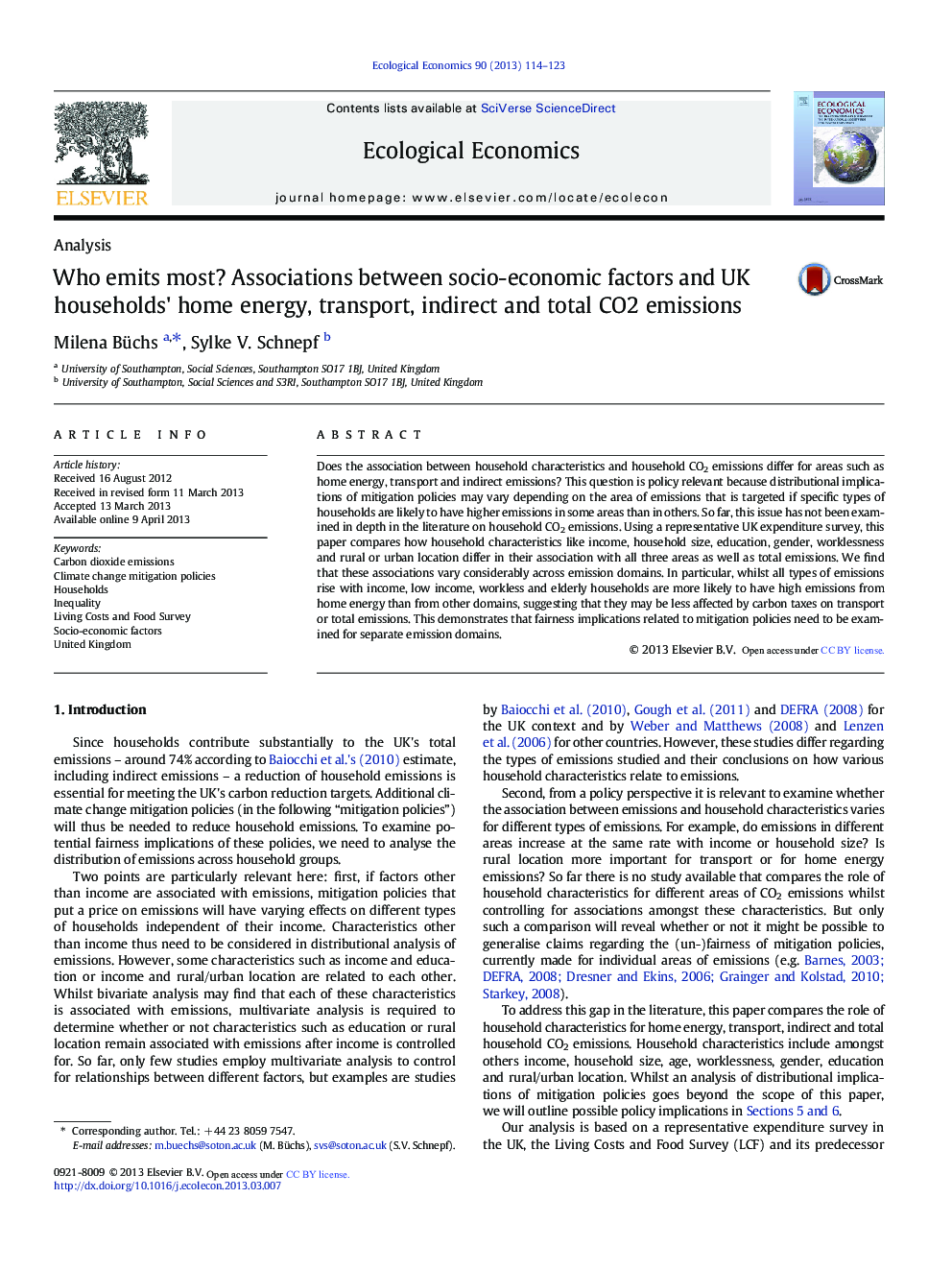| Article ID | Journal | Published Year | Pages | File Type |
|---|---|---|---|---|
| 5049895 | Ecological Economics | 2013 | 10 Pages |
Does the association between household characteristics and household CO2 emissions differ for areas such as home energy, transport and indirect emissions? This question is policy relevant because distributional implications of mitigation policies may vary depending on the area of emissions that is targeted if specific types of households are likely to have higher emissions in some areas than in others. So far, this issue has not been examined in depth in the literature on household CO2 emissions. Using a representative UK expenditure survey, this paper compares how household characteristics like income, household size, education, gender, worklessness and rural or urban location differ in their association with all three areas as well as total emissions. We find that these associations vary considerably across emission domains. In particular, whilst all types of emissions rise with income, low income, workless and elderly households are more likely to have high emissions from home energy than from other domains, suggesting that they may be less affected by carbon taxes on transport or total emissions. This demonstrates that fairness implications related to mitigation policies need to be examined for separate emission domains.
â¢Associations between household characteristics and CO2 emissions vary across domains.â¢Claims regarding the fairness of CO2 reduction policies need to differentiate between emission domains.â¢Mitigation policies are likely to have fairer outcomes if they target transport rather than home energy emissions.
